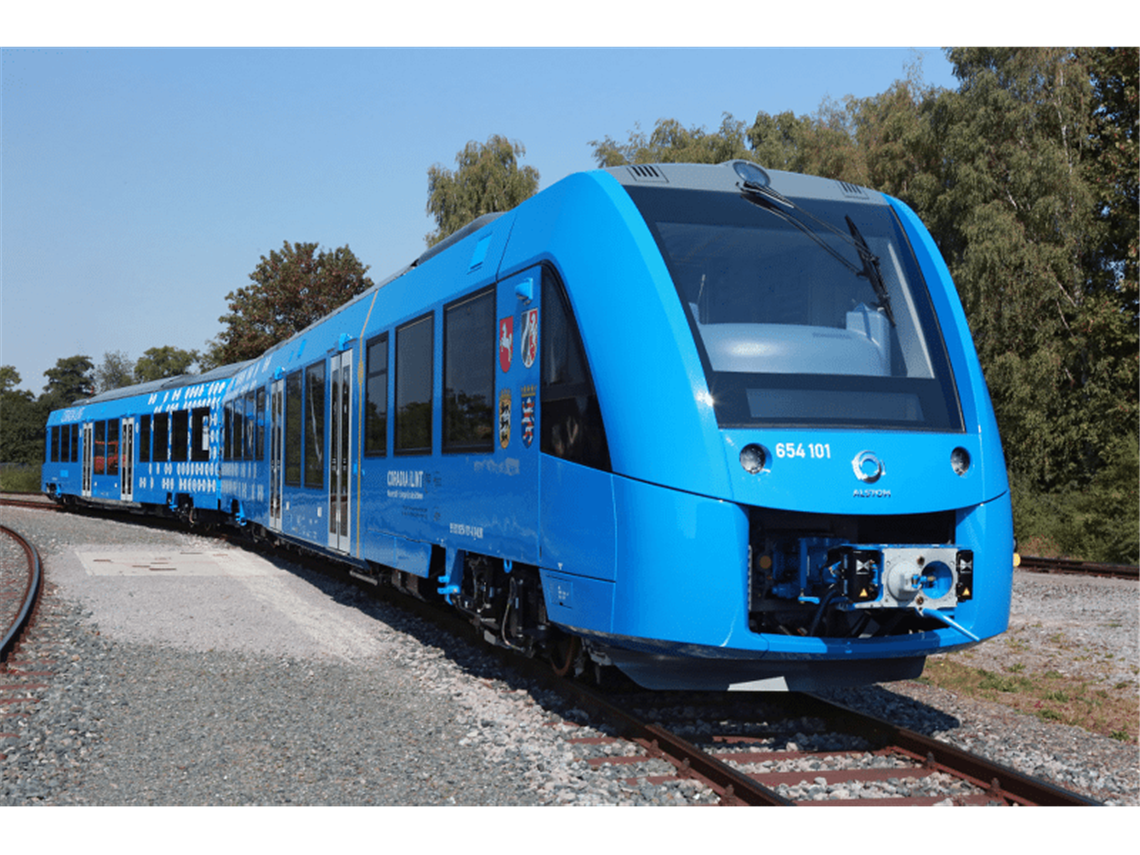Alstom Supplying Fuel Cell Passenger Trains
25 January 2018

Alstom will build 14 trains powered by fuel cells for the transport authority (LNVG) of Lower Saxony in Germany.
The trains are called Coradia iLint and will be built at Alstom’s Salzgitter, Germany, site. They are scheduled to go into passenger service between Cuxhaven, Bremerhaven, Bremervörde and Buxtehude. The trains will replace the diesel units of the transport authority Elbe-Weser-Verkehrsbetriebe (evb). The supply of hydrogen will be ensured by a filling station supplied by the Linde Group. The trains can cover up to 1000 km with one tank fill, and can reach a maximum speed of up to 140 km/h, Alstom said.
The management of LNVG, Alstom and Linde signed the contracts on the delivery of the 14 fuel cell trains and their 30-year maintenance and energy supply in Wolfsburg, Germany. The Coradia iLint prototype will begin pilot operation in the evb network in the spring of 2018, along with a second vehicle.
LNVG will purchase the Coradia iLint trains for its own vehicle pool and will then rent them to a railway operator. The fuel cell trains are going to be maintained by Alstom in the evb depot in Bremervörde, which will be expanded for this purpose.
“From now on, there will be a real alternative to diesel trains in non-electrified rail transport,” said Transport Minister Olaf Lies. “Hydrogen and fuel cells are an ideal combination for climate protection as well as for the energy and transport revolution. They allow the storage of energy and emission-free traveling on rail. We fund innovative technologies and make a sustainable contribution to the energy revolution in the transport sector. I am pleased that Alstom will build the trains in Lower Saxony, thus further strengthening their production site in Salzgitter.”
“This day represents a real breakthrough in rail transportation and a big step change towards a clean mobility system,” said Gian Luca Erbacci, senior vice president for Europe at Alstom. “For the first time worldwide, a hydrogen-fueled passenger regional train will replace diesel trains, generating zero-emission with the same performance as a regular regional train and up to 1000 km autonomy. Alstom is very proud to have developed its Coradia iLint train in Salzgitter, Lower Saxony. We are grateful to the German federal government and to the regional government of Lower Saxony for their continuous support and confidence in Alstom’s strong innovation capabilities.”
The guarantee of a reliable and secure supply of energy is one of the prerequisites for a successful use of fuel cell trains, the company said. The Linde Group, an international gas and engineering company, will provide the hydrogen supply of the new fuel cell trains and will build and operate the first hydrogen filling station for trains in Bremervörde. The necessary investment costs will be estimated at around 10 million euros, funded by the federal government.
LNVG will rent the premises for the filling station from evb and will make it available to Linde AG, which will also be responsible for the operation and construction permit. The on-site production of hydrogen by electrolysis and by means of wind energy will be planned in a later phase of the project.
“The use of hydrogen for rail vehicles is a milestone in the application of fuel cells for emission-free transport,” said Bernd Eulitz, member of the Executive Board of Linde AG. “For the first time, the coupling of this sector to hydrogen infrastructure will be realized within a significant scope and in an economically viable manner. This development will push the establishment of a hydrogen society and will create new solutions for the storage and transport of energy. We are proud to be part of this innovation project.”
POWER SOURCING GUIDE
The trusted reference and buyer’s guide for 83 years
The original “desktop search engine,” guiding nearly 10,000 users in more than 90 countries it is the primary reference for specifications and details on all the components that go into engine systems.
Visit Now
STAY CONNECTED




Receive the information you need when you need it through our world-leading magazines, newsletters and daily briefings.
CONNECT WITH THE TEAM












